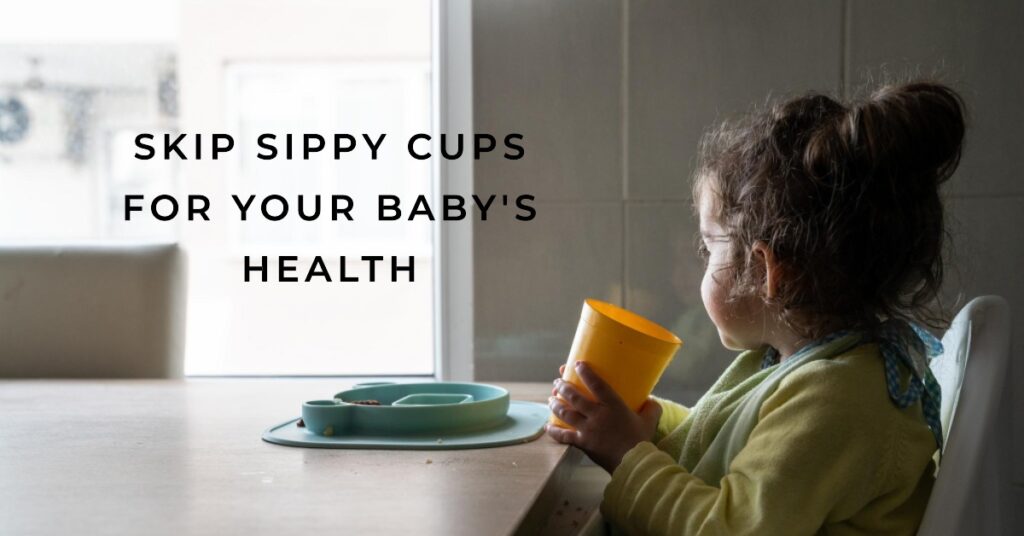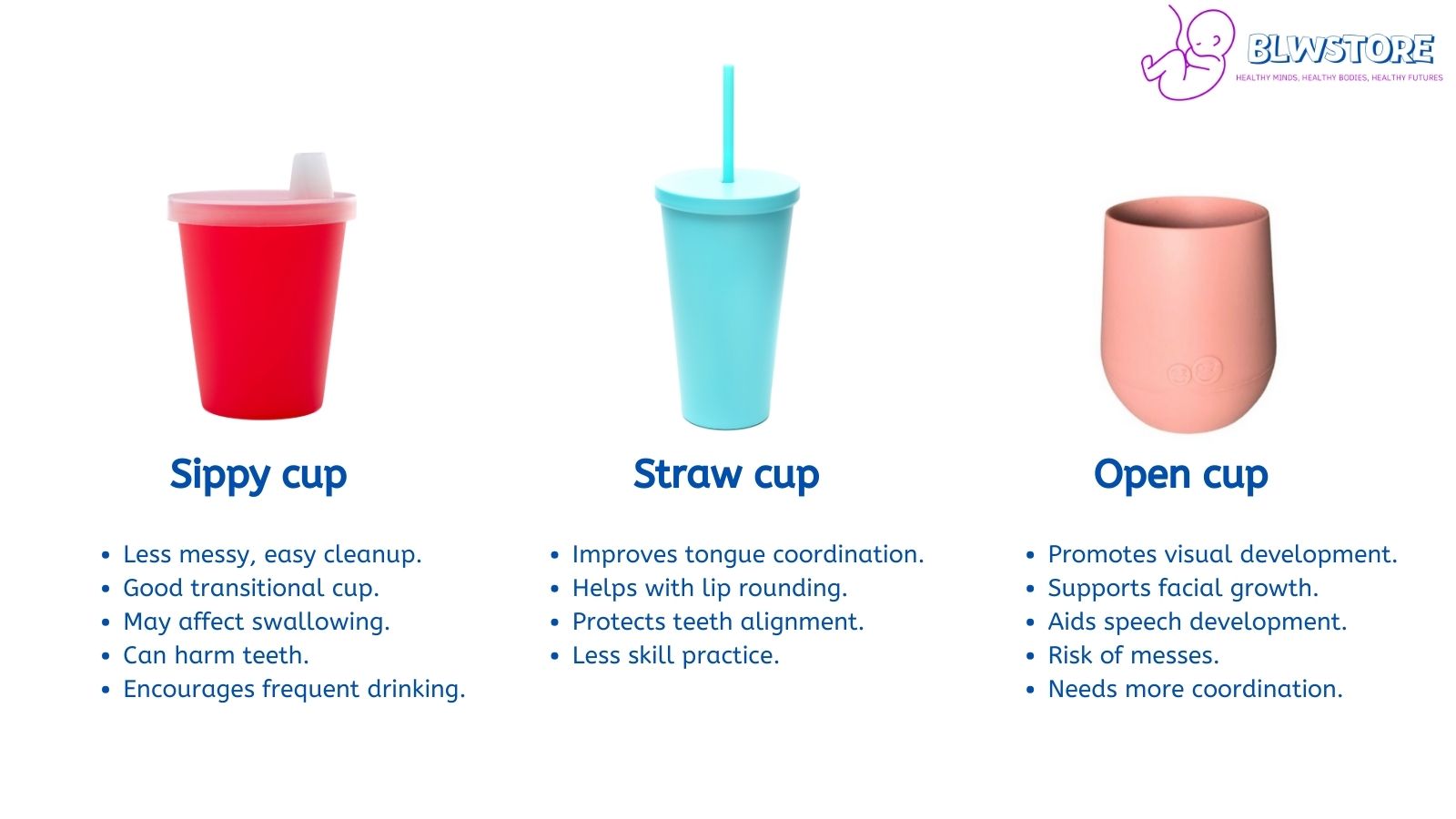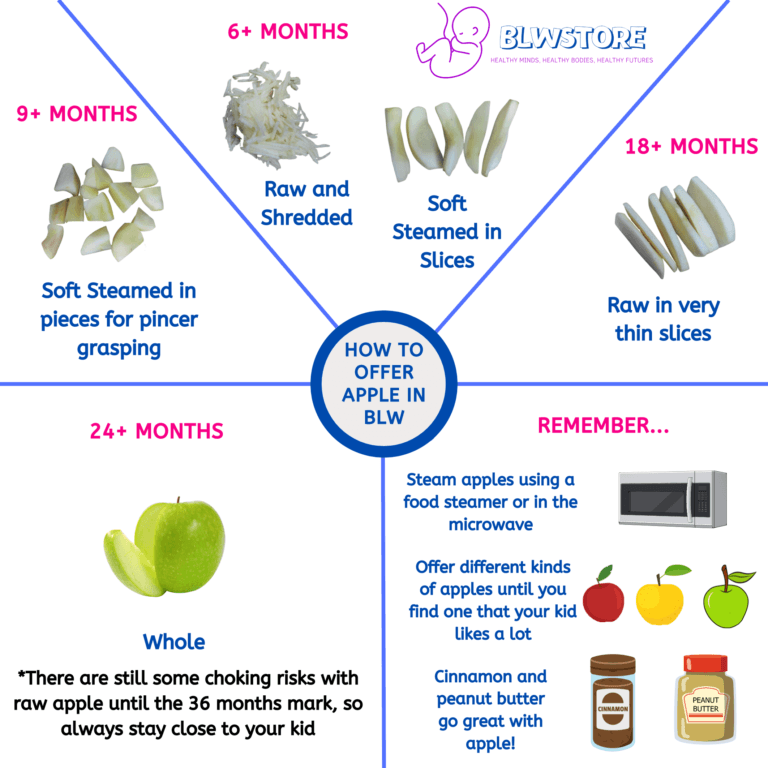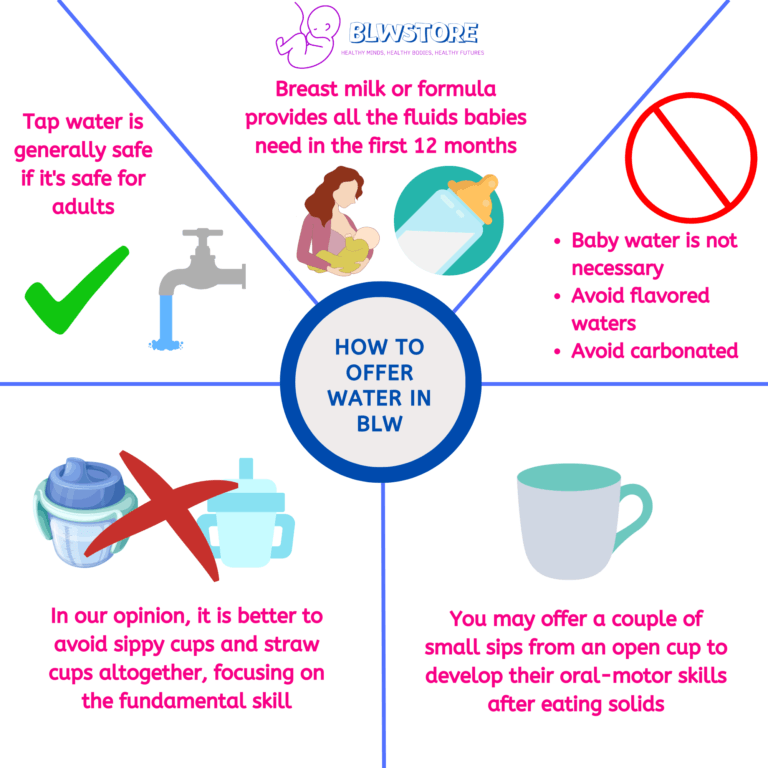
Our Short Answer: Should you Skip Sippy Cups?
In short, yes, you should skip sippy cups. While they’re seen as a step towards using a regular cup, they’re not necessary for every child.
Science has taught us that it’s better to move straight to a normal cup or use straw cups to promote healthier dental and speech development.
We recommend starting with an open cup directly if you can monitor your baby. If not, straw cups are the way to go.
Related: Baby’s First Cups: The Best Options – Best Cups for Toddlers
Is it Okay to skip the Sippy Cup?
You might feel like sippy cups are a must-have in your little one’s growing stages, but it’s perfectly okay to skip them. Here’s why:
- Dental Health: Dentists often note that prolonged use of sippy cups can affect a child’s developing teeth, possibly leading to issues like cavities or misalignment.
- Speech Development: Speech-language pathologists suggest that sippy cups can interfere with the muscle development needed for speech. Sipping from an open cup or using a straw encourages a more natural mouth movement.
- Motor Skills: Handing your toddler a regular cup can help improve their fine motor skills as they learn to handle and balance it, which is important for their overall development.
Of course, this doesn’t mean you need to eliminate sippy cups entirely from your routine – they’re certainly handy for avoiding spills on the go. But if you can supervise your little one’s drink time, it might be worth going straight to an open or straw cup.
What should you use instead of a sippy cup?

If you decide to move on from the sippy cup, here are some alternatives that can help in the transition:
- Open Cups: These are the regular, rimmed cups that everyone uses. Start with small, child-sized ones that are easy to hold. It might get messy at first, but practice makes perfect!
- Straw Cups: These allow your child to drink without tilting their head too much. The sucking action required is closer to natural drinking and better for their mouth’s development.
- 360 Cups: Also known as “miracle cups,” they don’t have a spout or straw but still prevent spills. They teach your child how to sip from the edge of a cup, just like an adult one.
- Spouted Cups: If you’re not ready to give up on spouts entirely, look for soft spouts as they’re nearer to bottle nipples and don’t require your child to tilt their head back as much.
Do Sippy Cups Cause Speech Delay?
Is there a link between sippy cups and speech delays? The concern here is centered around the spouts of some sippy cups, which can, if used too long, potentially impact your child’s mouth and jaw development. These developmental aspects are crucial for speech. The spout can discourage proper tongue placement and doesn’t promote the natural swallowing techniques needed for speech. This doesn’t mean that all children who use sippy cups will have speech delays, but it’s something to consider when choosing how your child drinks.
Here’s how it works:
- Tongue Position: Sippy cups can lead to improper tongue placement. For good speech habits, children should learn to elevate the tip of their tongue for certain sounds, like the “d” in “dog.”
- Jaw Movement: Normal cup or straw drinking requires more natural jaw movement, which is important for speech development.
- Muscle Development: Speech requires fine-tuned muscle control. Open cups and straws promote a more complex muscle use similar to talking.
While sippy cups aren’t directly responsible for speech delays, they may contribute to the habits that do. Talking with a pediatric speech-language pathologist can provide personalized guidance if speech development is a concern.
Sippy Cup vs Straw
When it comes to sippy cups and straw cups, both have their pros and cons, and choosing between them depends on what’s best for your child’s development. Here’s a quick comparison:
Sippy Cups:
- Good for preventing spills.
- Can be helpful as an initial step from bottle to cup.
- Easy to find in stores.
Straw Cups:
- Encourage mature sucking patterns that align with natural swallowing.
- They are better for oral health and lessen the risk of tooth decay because they keep liquids away from the teeth.
- It promotes better speech development patterns.
So, what’s the best choice? If you want to support your little one’s mouth muscles and speech development, go with a straw cup. It’s a small change that can make a big difference in their growth.
What Age Should a Child Stop Drinking from a Sippy Cup?
Ideally, children should phase out of sippy cups by the time they’re about 12 to 18 months old. By this age, they have better control over the muscles in their mouth and can handle an open cup or a straw cup with little training. It’s also crucial for speech and dental development, so transitioning away from sippy cups can help encourage proper growth.
What Age Should a Child Drink from a Straw?
Most children are ready to start using a straw between 9 to 15 months of age. Some kids might pick up straw drinking quickly, while others need more practice. To help your child, you can start with a soft, flexible straw in a shallow container.
You can introduce straws in their regular drinks as they become more confident. Drinking from a straw is fun for them and promotes healthy oral and speech development.
Remember, all kids develop at their own pace; these ages are just guidelines.
Your little one’s readiness and abilities are unique to them. If you’re concerned about their development in any way, don’t hesitate to consult your pediatrician. They’re there to support you and your child every step of the way.
We’re Maria and Alberto, a married couple and educators who are nutrition enthusiasts. Even before we had kids, we were already crazy about nutrition.
We’d read scientific articles, watch videos from nutritionists, and spend hours listening to nutrition podcasts.
Today, we continue doing this, but in a different way, as we’ve learned to sift through the noise and trends. Nutrition, like any other field of knowledge, the more you read and learn, the more you develop a comprehensive understanding of reality, and that’s what has happened to us.
Before having our first child, we focused on learning everything we could about child nutrition, using the same techniques we had already employed, backed by our extensive knowledge in nutrition.
Our mission is to help other parents with their children’s nutrition, to help them become the best versions of themselves.
If we are what we eat and drink, which is absolutely true, let’s do it right!







